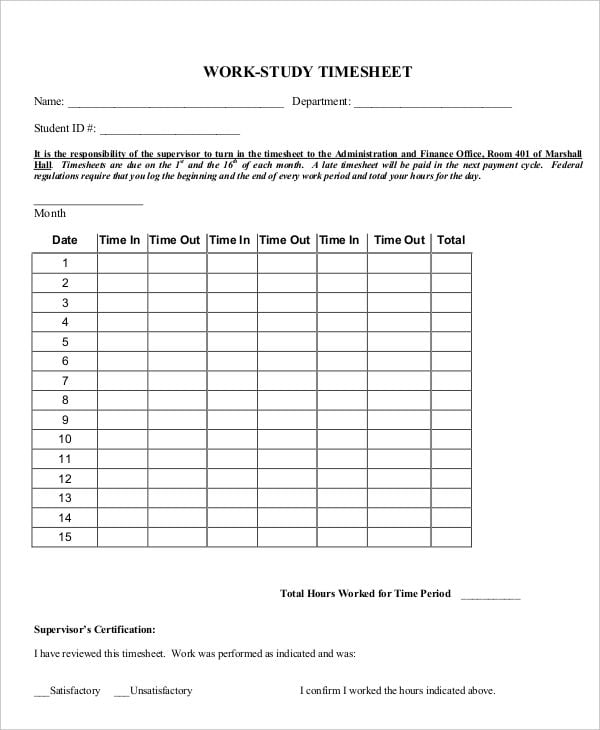
These points range from building shifts around your best employees to planning for the worst to using the best tools for the job. Whether you use online scheduling apps, have your own tools like Excel, or rely on the pen-and-paper method, there are some important points to keep in mind. This is despite the fact that technology makes it easier than ever to streamline the process and get it right the first time.
#3 weeks worktime sheet how to
(Our article, Is This a Morning Task?, has more on how to discover your peak time of day.) That way, your work will be of better quality, and it should take you less time to do. Schedule your most challenging tasks for the times of day when your energy levels are highest.These may include tasks that someone else in the organization should be doing (possibly at a lower pay rate) or personal activities such as sending non-work e-mails or surfing the Internet. Eliminate or delegate jobs that aren't part of your role, or that don't help you meet your objectives.Once you've analyzed your Activity Log, you should be able to boost your productivity by applying one of the following actions to various activities: A lot of this can depend on how you are, the rest breaks you take, when and what you eat, and the work that you're doing. You may also see that you are energetic in some parts of the day, and flat in other parts. You may be alarmed to see how much time you spend doing low value jobs! Once you've logged your time for a few days, analyze your Activity Log. (Evaluate this based on how far it contributed to achieving your job goals.) Learning From Your Activity Log

Then, at a convenient time, go back through your Activity Log and write down the duration of each activity, and whether it was a high, medium, low, or no value task. When you see how much time you're wasting on such activities, you can then change the way that you work to eliminate them.

For example, you might spend far more time than you think surfing the Internet, or getting coffee each afternoon. You can then focus on lower energy tasks, such as responding to emails or returning calls, in the afternoon.Īctivity Logs are also useful for helping you identify non-core activities that don't help you meet important objectives. For instance, if you're more energetic and creative in the morning, you'd be better off doing your most important work during this time. Your Activity Log will also help you understand whether or not you're doing your most important work during the right time of day. You'll find that memory is quite a poor guide, and that keeping the Log is an eye-opening experience! About Activity LogsĪn Activity Log (also known as an Activity Diary or a Job Activity Log) is a written record of how you spend your time.īy keeping an Activity Log for a few days, you can build up an accurate picture of what you do during the day, and how you invest your time. So, how can you understand this? One useful way is to keep an Activity Log, and that's what we're looking at in this article. This means that you can do more high value work, while still being able to leave the office at a sensible time.

When you properly understand how you use your time at work, you can minimize or eliminate low value activities. How much time do you spend at work doing things that don't contribute to your success? At first, you may say "not much." But – especially if you haven't used Activity Logs before – you may be surprised by how much more time you can find.


 0 kommentar(er)
0 kommentar(er)
